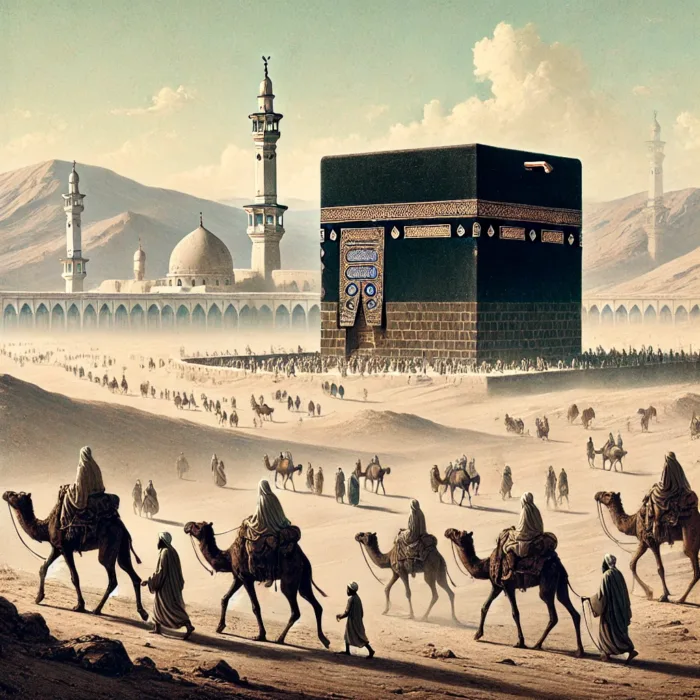Table of Contents
Understanding the Modes of Travel for Hajj
In the Qur’an, ALLAH says:
“And proclaim to the people the Ḥajj [pilgrimage]; they will come to you on foot and on every lean camel; they will come from every distant pass”1 (Suurat ‘Al-Ḥajj).

This verse raises the question: Why did ALLAH mention those who walk on foot and those who come riding camels, but not other modes of transportation?
The Context of Prophet Abraham’s Time
ALLAH directed this command to Prophet Abraham (peace be upon Him) when HE said, “And proclaim to the people the Ḥajj“. As we find in the same chapter, ALLAH reminds Prophet Abraham (peace be upon Him) of HIS command:
“And [mention] when WE designated for Abraham the site of the House, [saying], ‘Do not associate anything with ME…’”2 (Suurat ‘Al-Ḥajj).

The message was for Prophet Abraham (peace be upon Him), and ALLAH said, “they will come to you”. Notice, ALLAH says “to you”, referring to Abraham, not “to it”, meaning the pilgrimage.
At that time, the primary modes of transportation were walking and riding camels. That’s why ALLAH did not mention modern means of travel like airplanes or cars. The verse was revealed in the context of Abraham’s time, when walking and riding camels were the main ways people traveled long distances.
The term “lean camel” (in Arabic: “ضَامِر”) refers to camels that have become lean and thin due to the exhaustion of long journeys.

Note from the Translator3:
This verse is a timeless reminder of the universality of the pilgrimage. Although people today may travel by plane or car, the spirit of the journey, whether by foot or camel, remains a symbol of humility and devotion to ALLAH.
May ALLAH make it easy for all to undertake this blessed pilgrimage.
Sources:
- Dr. Fadel Saleh Alsamerai. بما أن القرآن صالح لكل زمان ، لماذا [ يَأْتُوكَ رِجَالًا وَعَلَىٰ كُلِّ ضَامِرٍ ] فقط. YouTube Video.

